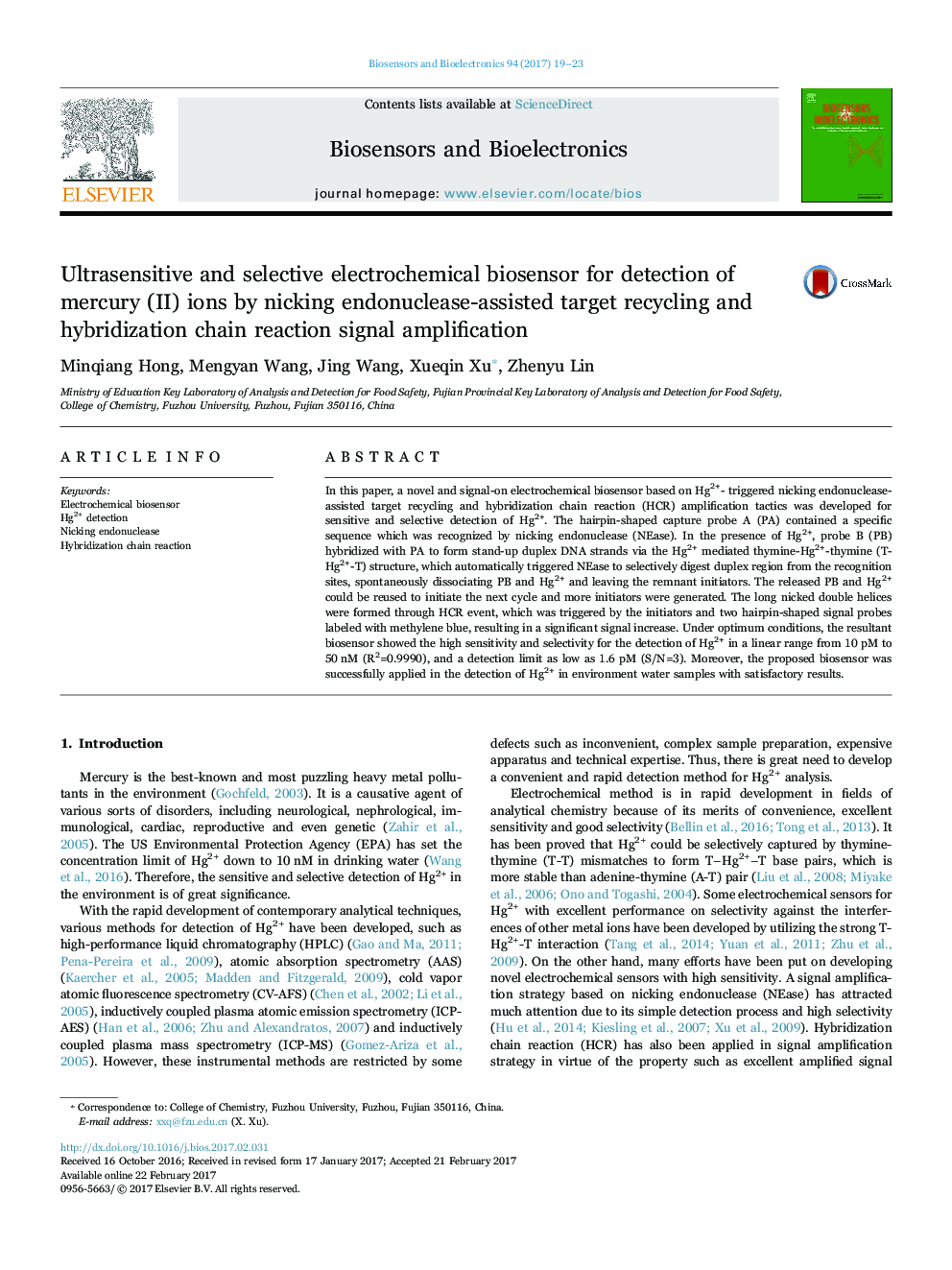| Article ID | Journal | Published Year | Pages | File Type |
|---|---|---|---|---|
| 5031025 | Biosensors and Bioelectronics | 2017 | 5 Pages |
Abstract
In this paper, a novel and signal-on electrochemical biosensor based on Hg2+- triggered nicking endonuclease-assisted target recycling and hybridization chain reaction (HCR) amplification tactics was developed for sensitive and selective detection of Hg2+. The hairpin-shaped capture probe A (PA) contained a specific sequence which was recognized by nicking endonuclease (NEase). In the presence of Hg2+, probe B (PB) hybridized with PA to form stand-up duplex DNA strands via the Hg2+ mediated thymine-Hg2+-thymine (T-Hg2+-T) structure, which automatically triggered NEase to selectively digest duplex region from the recognition sites, spontaneously dissociating PB and Hg2+ and leaving the remnant initiators. The released PB and Hg2+ could be reused to initiate the next cycle and more initiators were generated. The long nicked double helices were formed through HCR event, which was triggered by the initiators and two hairpin-shaped signal probes labeled with methylene blue, resulting in a significant signal increase. Under optimum conditions, the resultant biosensor showed the high sensitivity and selectivity for the detection of Hg2+ in a linear range from 10 pM to 50Â nM (R2=0.9990), and a detection limit as low as 1.6 pM (S/N=3). Moreover, the proposed biosensor was successfully applied in the detection of Hg2+ in environment water samples with satisfactory results.
Related Topics
Physical Sciences and Engineering
Chemistry
Analytical Chemistry
Authors
Minqiang Hong, Mengyan Wang, Jing Wang, Xueqin Xu, Zhenyu Lin,
